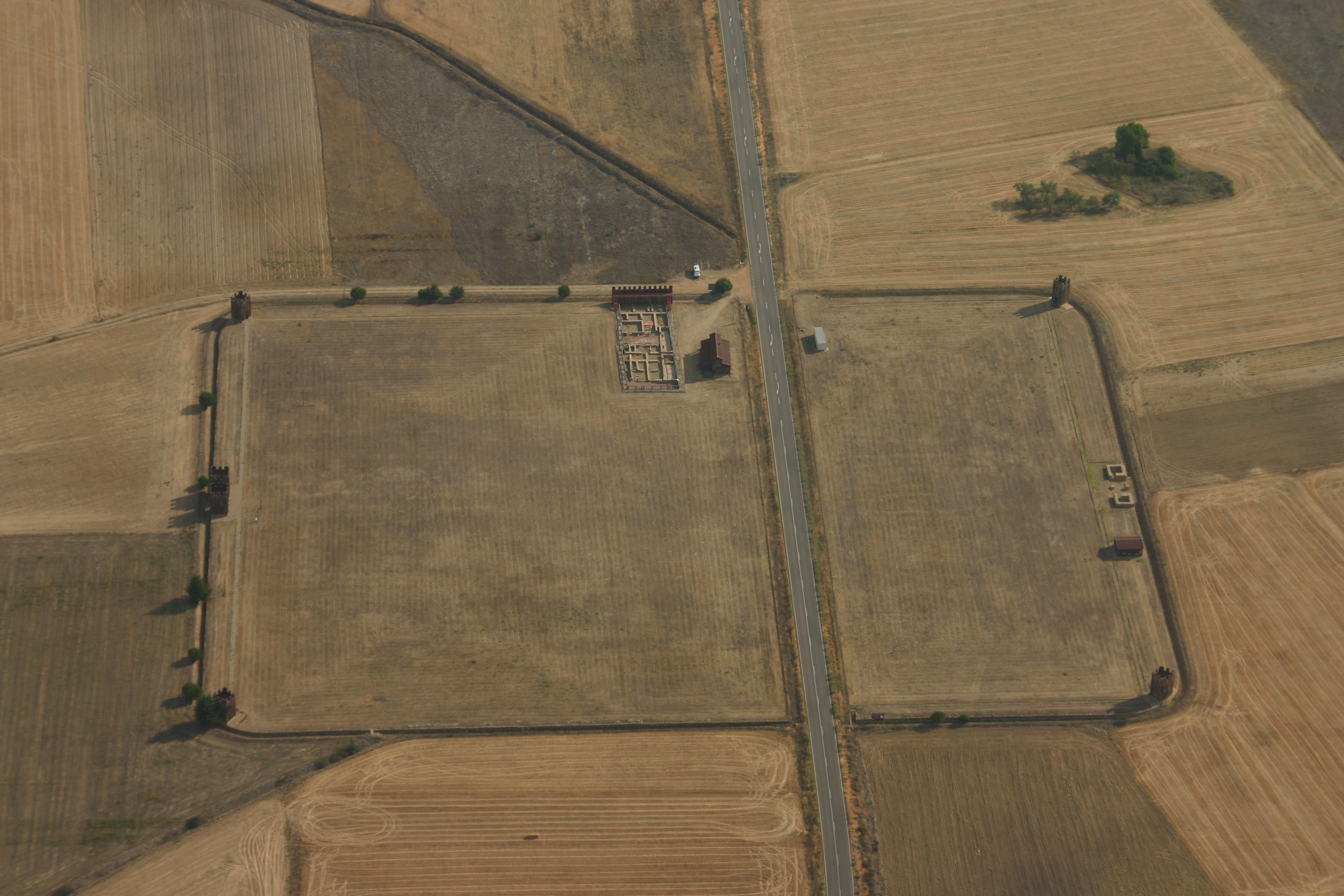Objetivos

.jpg)
PAISAJE Y TERRITORIO MILITARIZADO EN LA HISPANIA ROMANA: MOVILIDAD Y TRANSFERENCIA CULTURAL (SIGLOS II A. C. –IV D. C.)
El presente proyecto tiene como objetivo principal profundizar en las formas de ocupación del espacio por parte del ejército romano establecido en la Península ibérica desde finales del siglo III a. C. hasta el final del Imperio. Los campamentos, tanto de carácter temporal como permanentes, generan en torno a sí procesos particulares de territorialización y formación de paisajes de ocupación y explotación económica muy diferentes a los surgidos en torno a las civitates.
Con el fin de ampliar la perspectiva de investigación, avanzaremos en una segunda línea de trabajo, como es el impacto cultural del ejército romano como agente de romanización, es decir, a la transformación de las sociedades preexistentes y la adopción por parte de estas de patrones romanos. Cada vez se perfila más la existencia de un ámbito militarizado, zona más extensa, a veces de ámbito meso o macroregional, donde se deja sentir la influencia del ejército. Este influjo reposa en las propias guarniciones, además de la organización de espacios, poblaciones y explotación de recursos básicos, la creación de comunicación, importaciones de manufacturas itálicas, modas y usos castrenses, creencias, etc. Factor determinante para este proceso de transferencia cultural será precisamente el de la movilidad de las unidades militares sobre el terreno. Profundizaremos precisamente en aquellos elementos del registro arqueológico que aporten más información sobre este particular: arquitectura militar (técnicas y diferentes modelos constructivos), importaciones itálicas e imitaciones y emisiones monetales con destino a la población militar.
A partir de los resultados obtenidos en proyectos previos, la consecución de este objetivo fundamental se concretará en varios objetivos concretos.
Este proyecto será llevado a cabo por un equipo de formación interdisciplinar, que aborde, entre otras cuestiones, la aplicación de la Remote Sensing Archaeology a las prospecciones, los análisis arqueométricosaplicados a los materiales cerámicos (Difracción de Rayos X o DRX, Microscopio Electrónico de Barrido o MEB, Cromatrografía de gases) y la analítica de composición metálica de las monedas mediante la Fluorescencia por Rayos X (XRF).
LANDSCAPES AND MILITARIZED DISTRICTS IN ROMAN HISPANIA: MOBILITY AND CULTURAL TRANSFER (2ND CENTURY BC- 4TH CENTURY AD)
The main objective of this project is to analyze the forms of military occupation of the territory in the Iberian Peninsula from the the end of the 3rd century BC until the end of the Empire. The Roman camps, both temporary and permanent, generated around themselves particular processes of territorialization and formation of landscapes of occupation and economic exploitation very different from those arising around the civitates.
The second line of the work, would be the study of the cultural impact of the Roman Army as an agent of Romanization, namely the transformation of existing communities and their adaptation to the Roman cultural patterns. The existence of a militarized area, a more extensive region, sometimes meso or macroregional, is being recognized in the archaeological record. This influence is being documented in the garrisons, as well as on the organization of the territory, populations and exploitation of basic resources, the creation of the routes network, imports of italic manufactures, fashions and military practices, religious beliefs, etc. The decisive factor for this cultural transfer process is the mobility of military units. We will focus our attention precisely on the archaeological record that provide more information on this topic: military architecture (techniques and different construction models), italic imports and imitations and monetary issues destined to the military population.
The achievement of this fundamental objective will be based on the development of several concrete objectives.
this project will be carried out by an interdisciplinary training team, who addresses, among other issues, the application of Remote Sensing Archeology to prospecting, archaeometric analysis of pottery (X.Ray Diffraction-XRD, Scanning Electric Microscope-SEM, Gas Chromatography.
